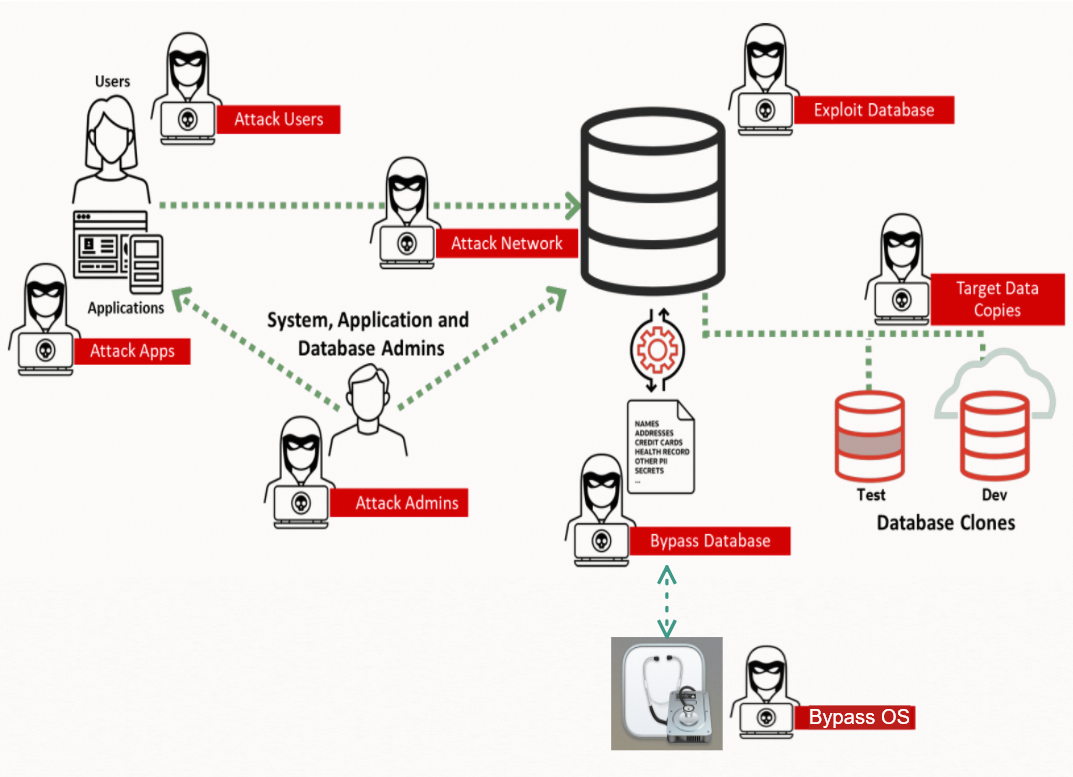Type | Description | Method |
Attack Admins | Attacks system administrators, such as OS administrators. System administrators have the highest permissions on a database system. If an attacker obtains an administrator account, the attacker can manage and access all storage resources, systems, and peripherals. In a database system, system administrators are divided into the following types: Database administrators (DBAs) can access database data and modify configurations. PaaS administrators, such as OS administrators, can access data in OSs and file systems. IaaS administrators, such as platform administrators, can access data on peripherals such as disks.
| OS vulnerabilities Administrator account or password leaks Improper system configurations |
Attack Users | Attacks users, such as database users. End users can access database systems and specific data. An attacker can obtain a user account and use the account to access user data to launch attacks such as logical data breach attacks. This allows the attacker to exploit vulnerabilities, such as by using SQL injection, to escalate privileges and obtain administrator permissions. | User account or password leaks Logical data breaches |
Attack Apps | Attacks application services, such as website servers. Application services are accessible over the Internet, have a larger attack surface, and are more vulnerable to intrusion compared to databases that are strictly protected. | Application service vulnerabilities OS vulnerabilities |
Attack Network | Attacks network connections, such as listening to and intercepting network data. In most cases, network attacks use bypass methods and are difficult to detect. | Network listening and interception |
Bypass Database | Bypasses database systems to obtain data and steals database data in bypass mode. For example, PaaS personnel can initiate a physical data breach by copying data files and backup files from database disks. | Physical data breaches |
Bypass OS | Bypasses the file system in an OS to obtain data and steals disk data in bypass mode. For example, IaaS personnel can directly copy data from local disks or cloud disks. | Mounting attacks |
Exploit Database | Exploits defects within a database system, such as code bugs, to access the database directly or indirectly. | Database OS vulnerabilities |
Target Data Copies | Attacks development and test databases. In most cases, production data is directly synchronized to a development and test database. However, no effective methods are used to ensure the security of the development and test database. As a result, the development and test database is more vulnerable than the production database. | All of the above |
 Elastic Compute Service (ECS)
Elastic Compute Service (ECS)
 Lingma
Lingma

























